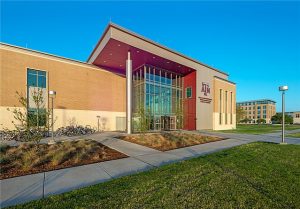TAMU Nuclear Engineering Course Requirements
TAMU Nuclear Engineering Course Requirements – When one thinks of groundbreaking advancements in the realm of nuclear science and technology, the role of quality education becomes paramount. In this vast landscape of academic opportunities, Texas A&M University (TAMU) emerges as a beacon for those passionate about nuclear engineering. Their robust curriculum and state-of-the-art facilities offer aspirants an unmatched educational experience.
In today’s globalized world, where information is abundant, making an informed decision about one’s academic journey is more crucial than ever. If you find yourself drawn to TAMU’s esteemed nuclear engineering program, it’s essential to familiarize yourself with its course requirements. This article serves as a comprehensive guide, aiming to equip prospective students with all the knowledge they’ll need to navigate TAMU’s nuclear engineering landscape.School News Portal

Photo Source: collegegazette.com
Our journey will begin with a deep dive into the core courses that form the foundation of TAMU’s nuclear engineering program. From there, we’ll explore electives, lab experiences, and other essential components that shape a well-rounded nuclear engineer. Additionally, for those who appreciate the bigger picture, we’ll sprinkle in some crucial additional information to ensure every reader walks away with a holistic understanding of what TAMU’s nuclear engineering program entails.
READ ALSO: TAMU Rules
Tamu Nuclear Engineering Course Requirements
Core Course Requirements
Firstly, to understand the depth and breadth of the curriculum, let’s dive straight into the core course requirements:
- Nuclear Physics and Reactor Theory: Central to any nuclear engineering program, this introduces students to nuclear reactions, radioactivity, and reactor kinetics.TAMU Nuclear Engineering
- Radiation Measurement and Protection: This course educates students on radiation detection mechanisms and emphasizes the importance of safety in nuclear operations.
- Thermal-Hydraulics in Nuclear Systems: Delving into the heat transfer and fluid flow in nuclear systems, this course combines the principles of thermal sciences with nuclear reactor applications.
- Nuclear Materials: Students get acquainted with the behavior and properties of materials in nuclear environments, particularly focusing on radiation effects.
- Nuclear Power Engineering: Offering a thorough grounding in the principles governing nuclear reactors, this course covers reactor operations, safety, and design.
- Nuclear Fuel Cycle and Waste Management: With a spotlight on the life cycle of nuclear fuel, students learn about its production, utilization, reprocessing, and waste management.
Read Also: Change Of Major TAMU Engineering Requirements and Deadline 2024
Electives: Tailoring Your Specialization
Next, while core courses lay the foundation, electives allow students to specialize and tailor their education to their interests. Some noteworthy electives include:
- Advanced Reactor Designs: Explores innovative reactor concepts, ensuring students stay at the cutting edge of nuclear technology.
- Computational Methods in Nuclear Engineering: Equips students with computational tools necessary for analyzing complex nuclear systems.
- Nuclear Non-Proliferation and Safeguards: Grounds students in international policies and mechanisms to prevent nuclear weapon proliferation.
Read Also: g
Lab Work and Practical Experiences
Moreover, practical experience remains essential. TAMU places heavy emphasis on:
- Nuclear Reactor Lab: Students get hands-on experience with the university’s research reactor, delving into operations and experiments.
- Radiation Detection Lab: This allows students to handle radiation detection and measurement instruments in real-time scenarios.
Read Also: ISEN Course Requirements TAMU
Additional Requirements
On top of the academic courses, students also encounter other essentials:
- Seminars and Workshops: TAMU often hosts industry experts, providing students with valuable insights and networking opportunities.
- Internships: Practical field experience helps bridge the gap between academic knowledge and real-world applications.
- Senior Design Project: As a culmination of their learning, students undertake projects to design, analyze, or evaluate nuclear systems.
Read Also:
Additional Information: Tips for Success
Lastly, it’s vital to stay informed:
- Stay Updated: The nuclear industry evolves rapidly. Ensure you keep abreast with the latest developments.
- Networking: Building professional connections can offer invaluable opportunities in the future.
- Engage in Research: TAMU boasts state-of-the-art research facilities. Actively participating can give you a competitive edge.
Conclusion
In conclusion, pursuing nuclear engineering at Texas A&M University is undoubtedly a commendable choice. By understanding the TAMU nuclear engineering course requirements and complementing them with the additional information provided, you position yourself for success. As you embark on this academic adventure, remember to remain proactive, engaged, and ever-curious. The nuclear realm awaits your contribution, and TAMU stands ready to guide you every step of the way.

